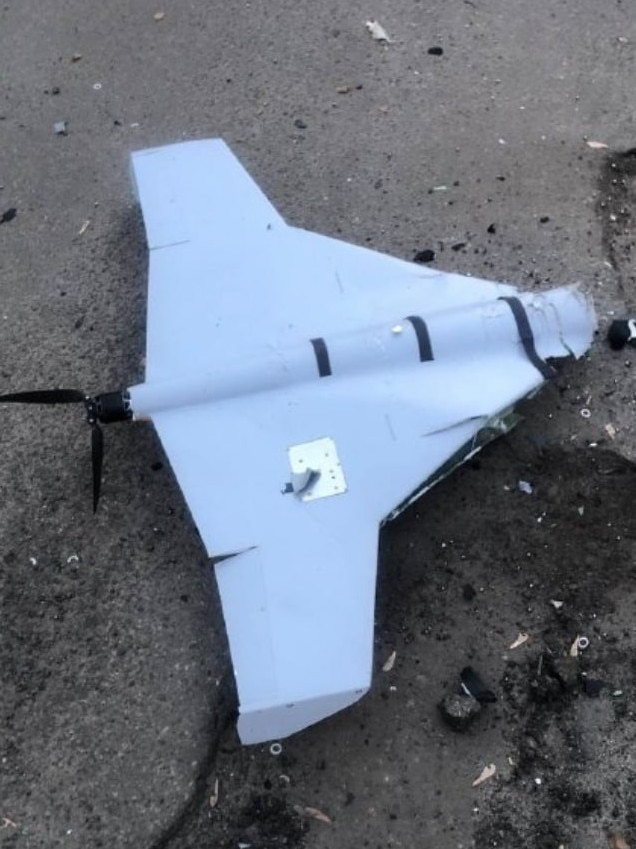Concerns as killer AI drone pictured in Ukraine
A hi-tech drone that has the capabilities of pulling the switch on its own attacks has warfare experts concerned about the rise in AI technology.

Technology
Don't miss out on the headlines from Technology. Followed categories will be added to My News.
A “suicide drone” that relies on artificial intelligence technology to decide what and when to destroy has been reportedly found in Ukraine with experts worried about the use of killer robots in warfare.
Pictures of the KUB-BLA device posted by Ukraine’s Internal Affairs Minister Anton Gerashchenko on Telegram and spread widely on social media have prompted concern from US-based experts over the use of the technology by Russian forces.
The drone, with a wingspan of 1.2 metres, can be fired from a portable launch and fly for up to 30 minutes with a top speed of 130km/h, according to its manufacturer. When a target is acquired it deliberately crashes into its location detonating a three kilogram explosive.

It is sold by ZALA Aero, a subsidiary of the Russian arms company Kalashnikov, and was demonstrated at a 2019 air show. The company boasted that it featured “intelligent detection and recognition of objects by class and type in real time”.
The pictures shared by Mr Gerashchenko appear to show the drone to be damaged or shot down, but the images have not been officially verified.
The impact of the technology on the battlefield in Ukraine may be minor, but its use would set a dangerous precedent for killer AI technology.
In the US, operators of drones or other equipment with the power to kill an enemy must have the final decision delivered by a human, however legislation that would prevent the development of such AI has been voted down.


MIT professor Max Tegmark has campaigned against the use of fully autonomous weapons. He said that unless a worldwide ban is introduced the developments and application of the technology will continue to be used.
“We’ll see even more proliferation of such lethal autonomous weapons unless more Western nations start supporting a ban on them,” he told Wired.
Another military technology expert Michael Horowitz told the publication there are still questions about the use and the quality of the killer drone.
“The companies that produce these loitering drones talk up their autonomous features, but often the autonomy involves flight corrections and manoeuvring to hit a target identified by a human operator, not autonomy in the way the international community would define an autonomous weapon,” he said.

Ukrainians have used drones effectively as they try to stop the Russian invasion.
Across the nation, soldiers have used a remotely operated Turkish-made drone called the TB2 guided missiles at Russian infrastructure and vehicles.
The cumbersome drone has little ability to defend itself but has been effective against a weak Russian air campaign.
The latest insight into the hi-tech warfare comes as Ukraine rejected a demand to surrender its besieged city Mariupol as the invading forces continue their brutal assault on population centres across the country.
Mariupol has been besieged with relentless bombing and street fighting for days. Many of its residents are without food, water or power. The situation on the ground has been described as “hell on earth”.
On Monday, the Russian Defence Ministry announced it would allow Ukrainians to evacuate the city unharmed, but only if it surrendered to them. The Ukrainian Deputy Prime Minister, Iryna Vereshchuk, said that was “not an option”.
Fresh explosions have also erupted in Kyiv. Russia appears to have abandoned its efforts to encircle the capital city and is instead shelling it from afar.
More Coverage
Originally published as Concerns as killer AI drone pictured in Ukraine




